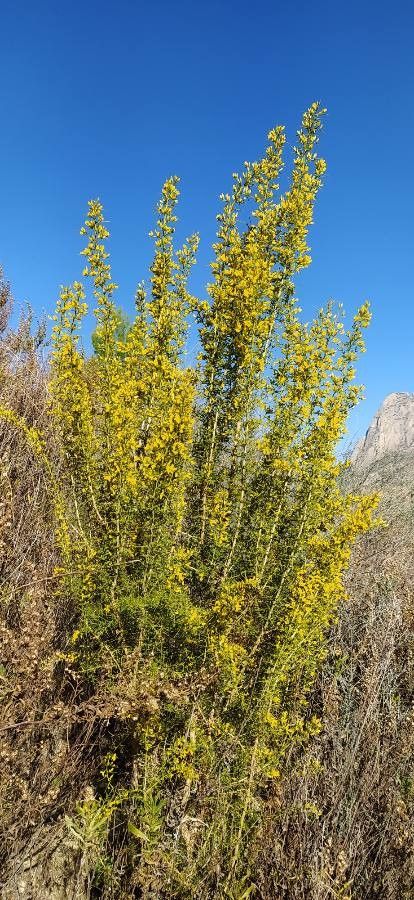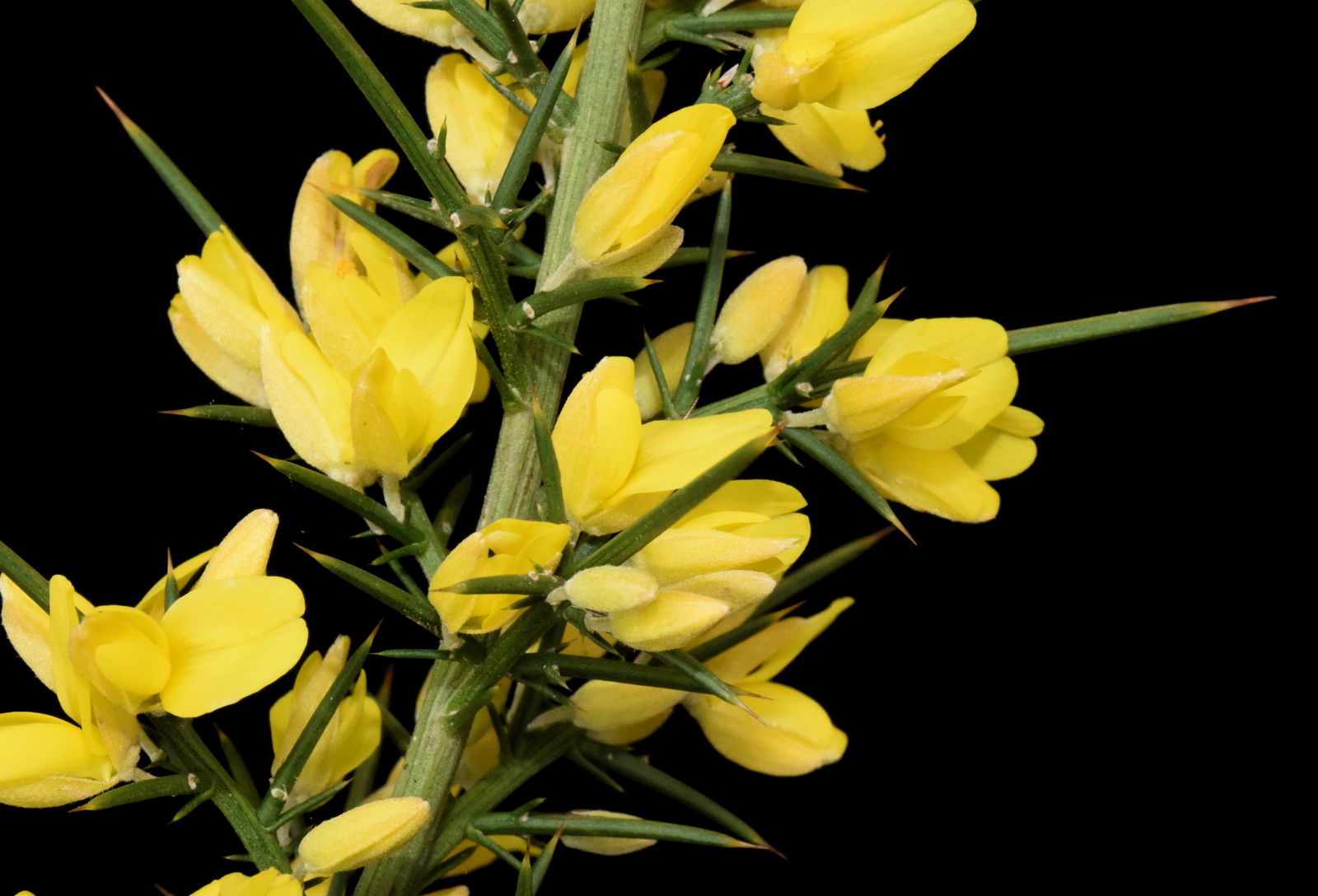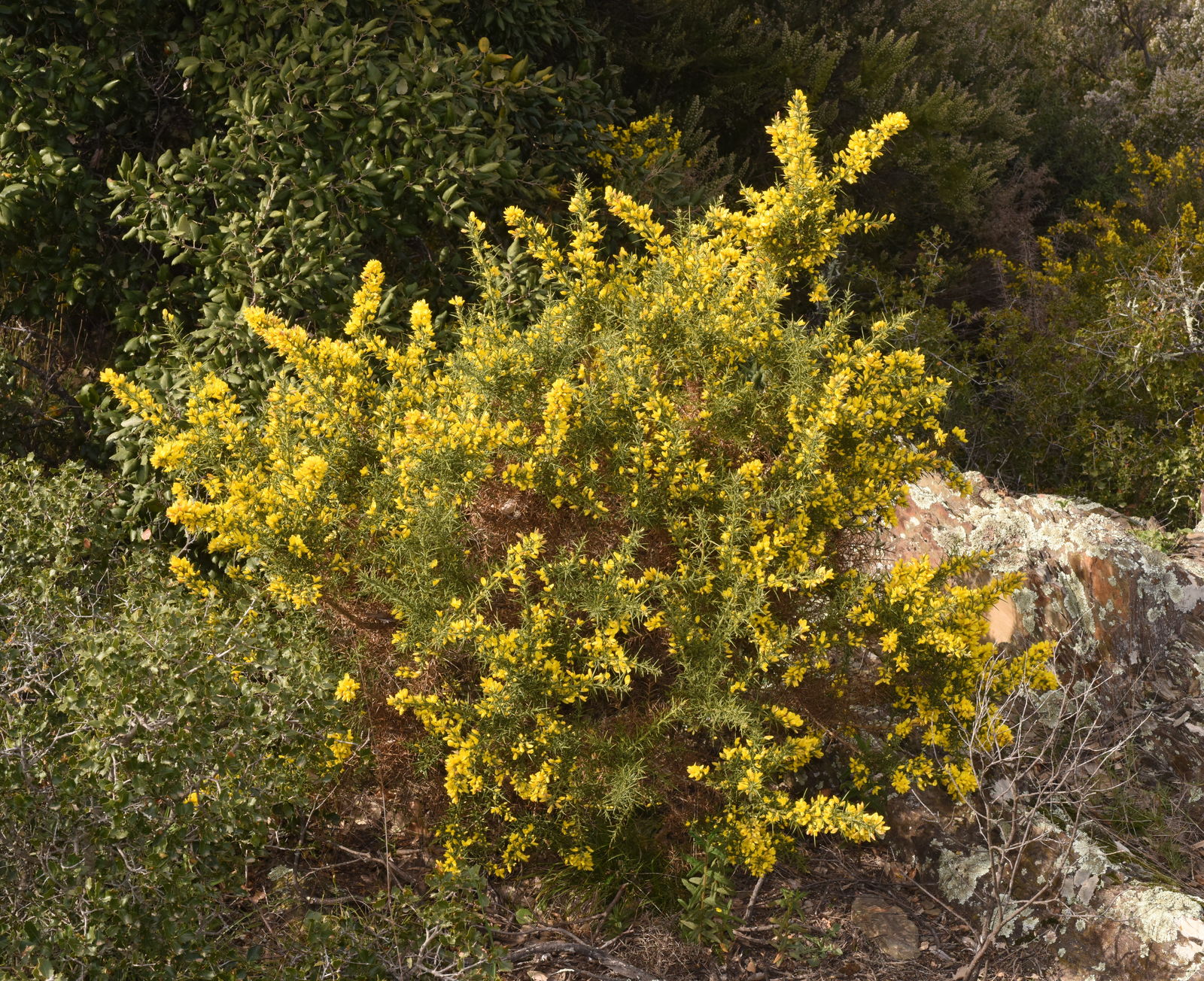Small-flowered Gorse
ulex parviflorus
Also known as: ["Gorse","Furze"]
Overview
A spiny, evergreen shrub native to the Mediterranean region, known for its small, bright yellow flowers.
Benefits & Perks
["drought tolerant","wildlife attractant (bees, butterflies, birds)"]
Botanical Classification
| Phylum: | Magnoliophyta |
| Class: | Magnoliopsida |
| Order: | Fabales |
| Family: | Fabaceae |
| Genus: | Ulex |
| Botanical Name: | Ulex parviflorus |
Plant Characteristics
Basic Information
- Category: Shrubs
- Suitable Location: rock gardens, coastal areas, or sunny borders
- Suitable For:
- Is Weed: No
- Allergenicity: low
Environmental Needs
- Climate: {"temperatureRange":"5–35°C"}
- Hardiness: {"zones":"8–10"}
- Misting: rarely required
- Drainage: Fast-draining to prevent waterlogging.
- Soil Type: Well-draining, sandy, or loamy soil with some organic matter.
Maintenance Level
- Maintenance Level: low
- Toughness Level: high
- Pruning Frequency: Annually in late winter or early spring before new growth begins.
- Pruning Intensity: Moderate; remove up to one-third of the oldest stems to rejuvenate the plant.
Care Details
Ideal Sunlight Coverage:
Full sun (6–8 hours of direct sunlight daily); tolerates partial shade but may become leggy.
Sunlight Tolerance Tips:
Acclimate gradually if moving from shade to full sun; protect from intense midday sun in hot climates; ensure good air circulation to prevent fungal issues.
Care Requirements
Care Difficulty
moderatemoderate
Sunlight
full sun
Rotate plant for even growth; provide shade during extreme heat; avoid sudden light changes.
Watering
every 7–10 days during active growth, reduce in winter
Water thoroughly but infrequently; ensure soil dries between waterings; avoid overwatering to prevent root rot.
Soil
well-drained, sandy or loamy soil
pH: Slightly acidic to neutral (pH 6.0–7.0).
Avoid heavy clay soils; ensure pots have drainage holes; use raised beds for outdoor planting.
Temperature
Thrives in warm conditions (65–85°F / 18–29°C); tolerates mild frosts but prefers mild winters.
Protect from frost; avoid sudden temperature swings; ensure good air circulation.
Fertilizing
every 2–3 months during spring and summer
Fertilize sparingly; apply before new growth emerges; flush soil occasionally to prevent salt buildup.
Propagation
Methods
Stem cuttings or seed; stem cuttings are more reliable for home growers.
Step-by-Step Propagation Guide
- Take 4–6 inch cuttings.
- Remove lower leaves.
- Dip in rooting hormone.
- Plant in medium.
- Maintain humidity.
Best Time: Spring or early summer when the plant is actively growing.
Environment
Warm (70–75°F / 21–24°C), high humidity (70–80%), and bright indirect light.
Medium
Well-draining mix of perlite and peat moss or cactus mix.
Hormone
Rooting hormone is recommended to improve success rates.
Timeline
Roots may develop in 4–6 weeks; establish in new pot after 3–4 months.
Tools Needed
Pruning shears, rooting hormone, small pots, misting spray bottle.
Quick Tips
Use healthy, non-flowering stems; maintain consistent moisture; provide bottom heat if possible.
Pruning & Repotting
Pruning Guide
Method
Selective thinning of stems; heading back to encourage branching.
Pruning Plan
Prune to maintain shape, encourage bushiness, and remove dead or weak growth.
Tools
Pruning shears, gloves, disinfectant for tools.
Checklist
Disinfect tools; prune during dormancy; remove dead or crossing branches; shape evenly.
Repotting Guide
Best Season
Early spring before active growth starts.
Pot Size
Increase pot size by 2–3 inches in diameter; ensure bottom drainage holes.
Method
Remove plant gently; trim roots if necessary; use fresh, well-draining soil; ensure proper drainage.
Suggestions
Repot every 2–3 years or when roots fill the pot; beneficial for container-grown plants.
Checklist
Prepare new pot; trim roots if crowded; use fresh soil mix; water lightly after repotting.
Advanced Care Tips
Watering Mastery
Watering Checklist
Check soil moisture before watering; water deeply; ensure drainage; avoid wetting foliage.
How to Apply Water Properly
Water directly at the root zone until water drains from the bottom; ensure even moisture without waterlogging; water in the morning to reduce evaporation.
Watering Schedule Tips
Water deeply once every 7–10 days during active growth in spring and summer; reduce frequency to every 2–3 weeks in fall and winter. Adjust based on rainfall and soil dryness.
Soil Improvement
Add perlite or coarse sand for drainage; incorporate compost for fertility; ensure good aeration.
Temperature Stress Management
Signs of Temperature Issues
Yellowing leaves (cold stress); wilting or leaf drop (heat stress); stunted growth.
Cold Stress
Low temperatures slow growth and may cause leaf drop; prolonged cold can damage roots.
Solution: Move to a sheltered location; provide frost protection; avoid overwatering in cold conditions.
Hot Stress
Excessive heat can cause wilting, leaf scorch, and reduced flowering.
Solution: Provide afternoon shade; increase watering frequency; use mulch to retain soil moisture.
Fertilizing Guide
Fertilizing Checklist
Use diluted fertilizer; apply to moist soil; avoid contact with roots; follow package instructions.
Fertilizing Method
Use a balanced, slow-release fertilizer in early spring; avoid high-nitrogen fertilizers; reduce or stop feeding in winter.
Common Problems & Solutions
Toxicity Warning
Cats
ToxicCats are susceptible to toxicity from Ulex parviflorus due to its alkaloid content. Ingestion can cause severe gastrointestinal distress and systemic effects, potentially leading to more serious health complications.
⚠️ Symptoms:
🌿 Toxic Parts:
⚡ Toxic If:
if eaten
Dogs
ToxicIngestion of Ulex parviflorus by dogs can lead to gastrointestinal upset and systemic toxicity due to the presence of alkaloids. These compounds can disrupt normal metabolic processes in canines.
⚠️ Symptoms:
🌿 Toxic Parts:
⚡ Toxic If:
if eaten
Humans
ToxicUlex parviflorus contains toxic compounds, including alkaloids, which can cause significant physiological disturbances upon ingestion. These compounds interfere with normal cellular functions and can lead to systemic toxicity.
⚠️ Symptoms:
🌿 Toxic Parts:
⚡ Toxic If:
if eaten
Frequently Asked Questions
Q: Is Ulex parviflorus toxic to pets?
A: Yes, it is toxic to dogs and cats.
Q: Does this plant require much maintenance?
A: No, it has low maintenance needs.
Q: Can Ulex parviflorus grow in dry conditions?
A: Yes, it is highly drought tolerant.
Quick Reference
| Family: | Fabaceae |
| Care: | moderate |
| Light: | full sun |
| Water: | every 7–10 days during activ |
Get Expert Care Tips
Download the Plantious app for personalized care reminders and plant identification!
Google Play App Store








